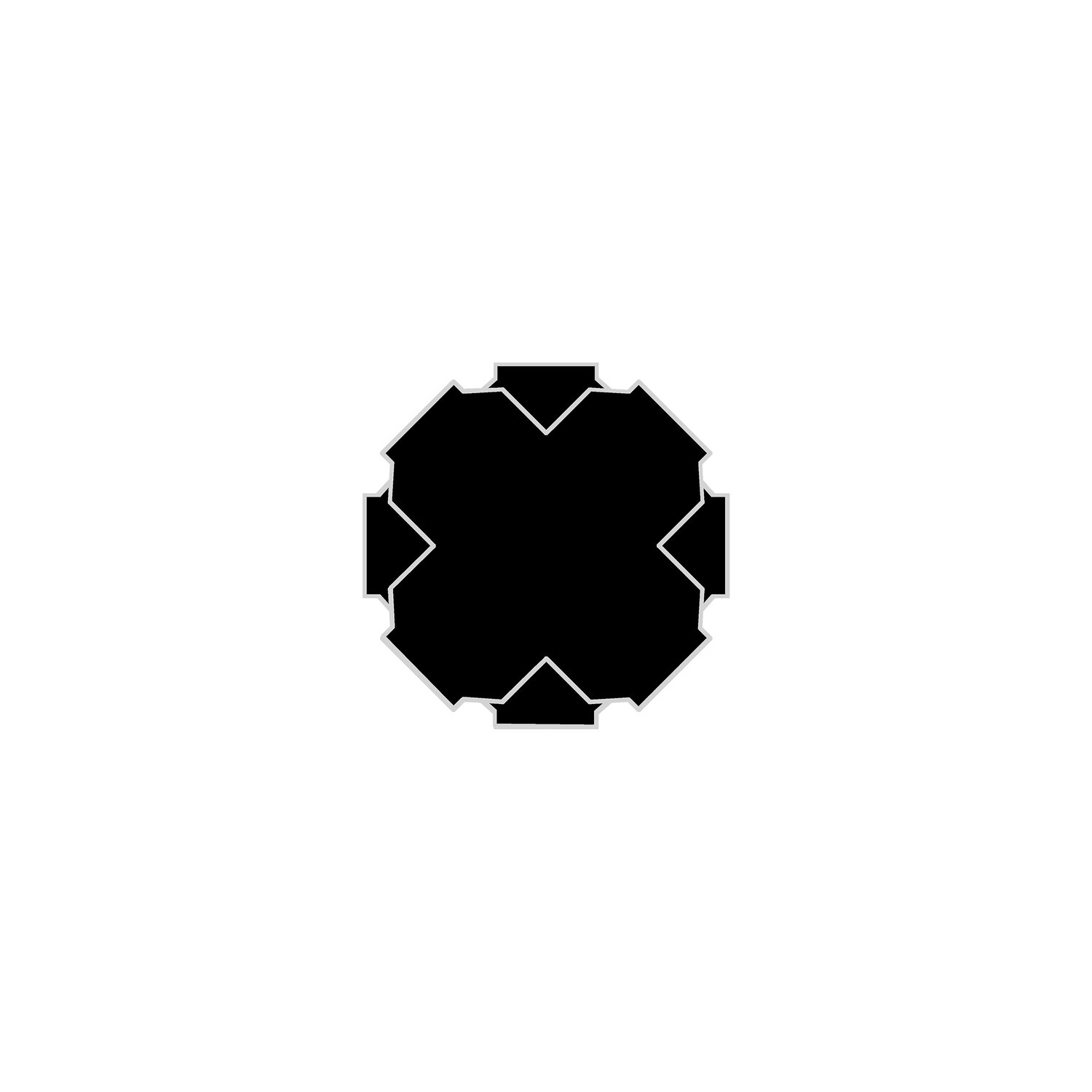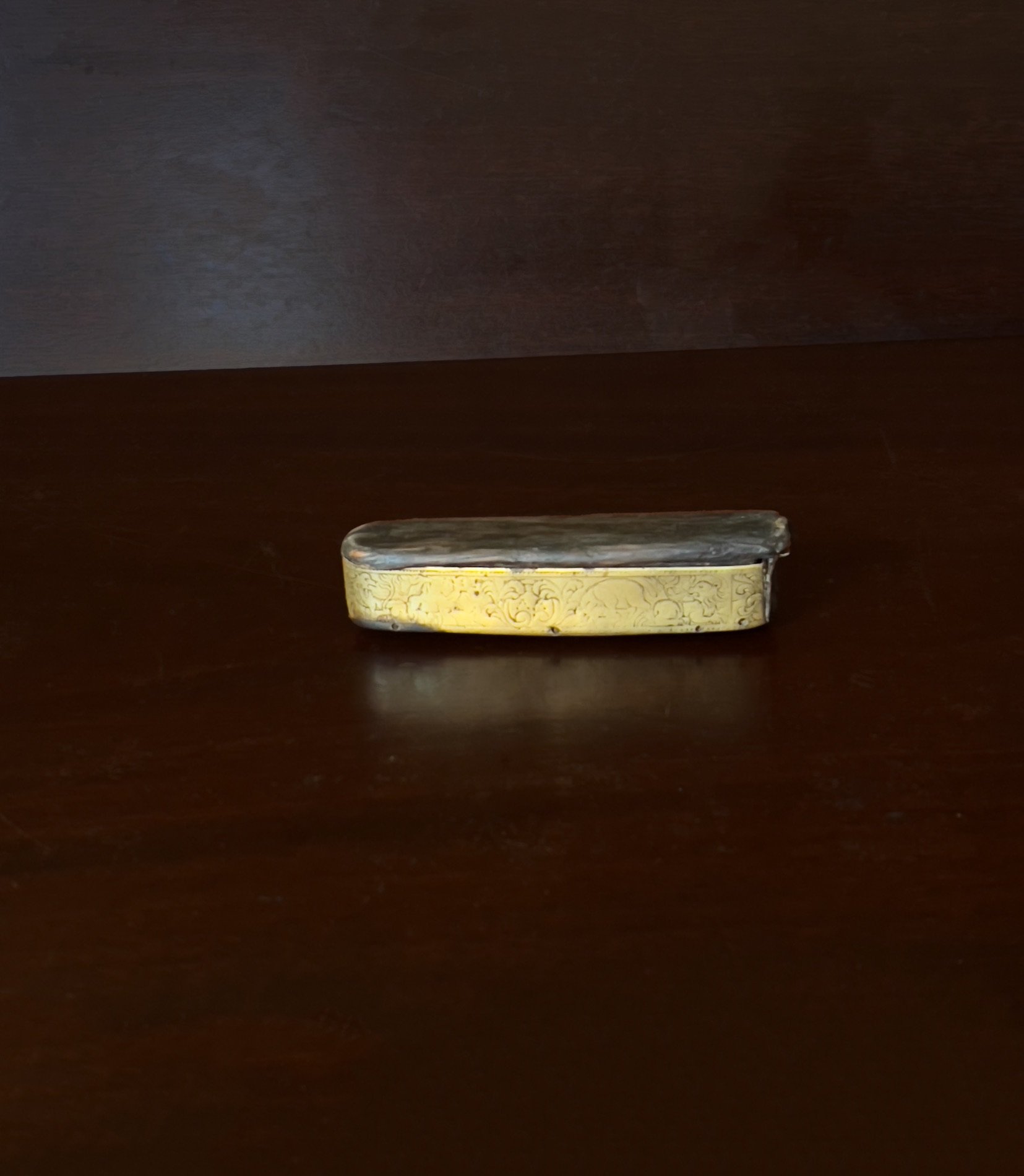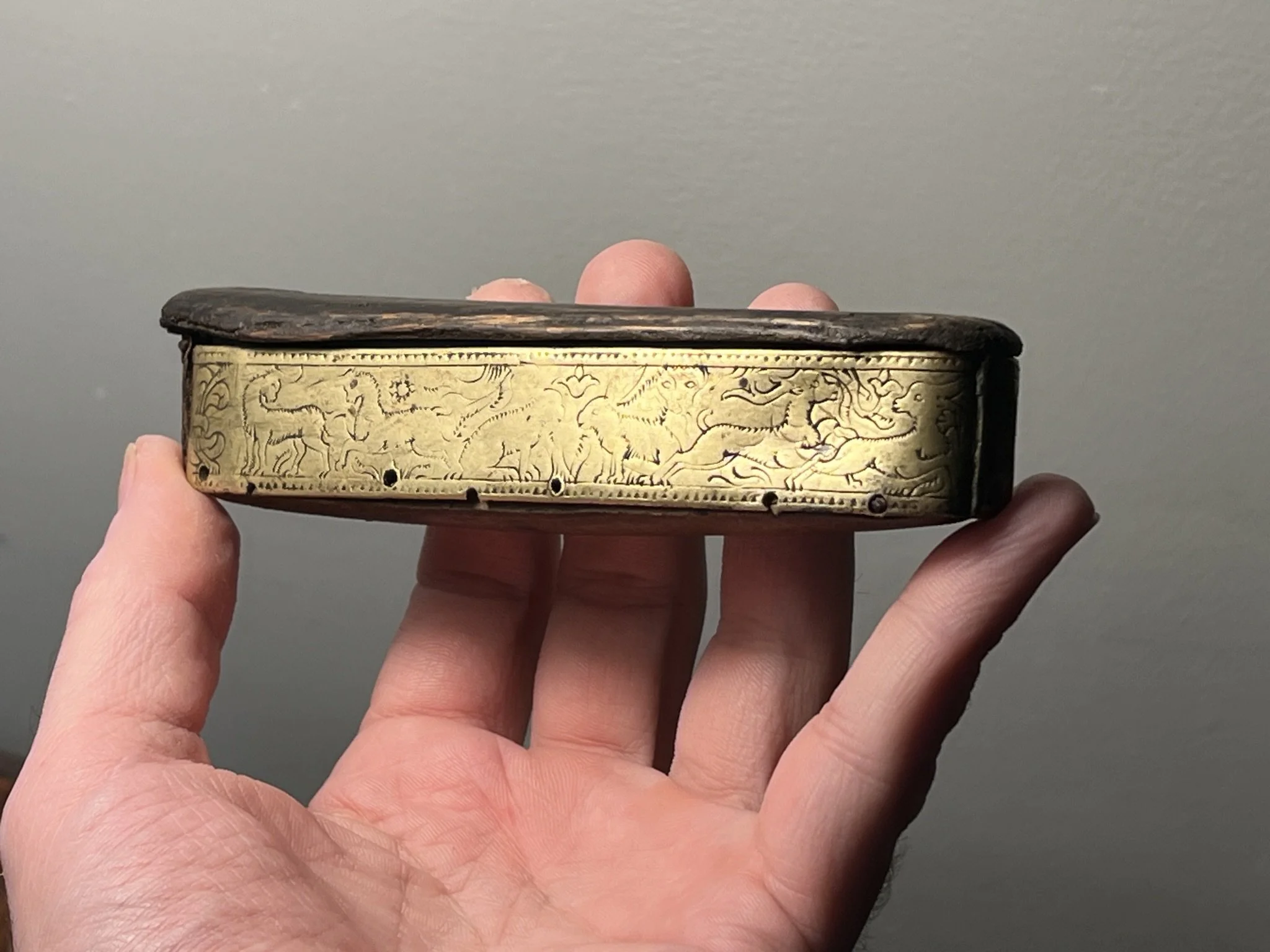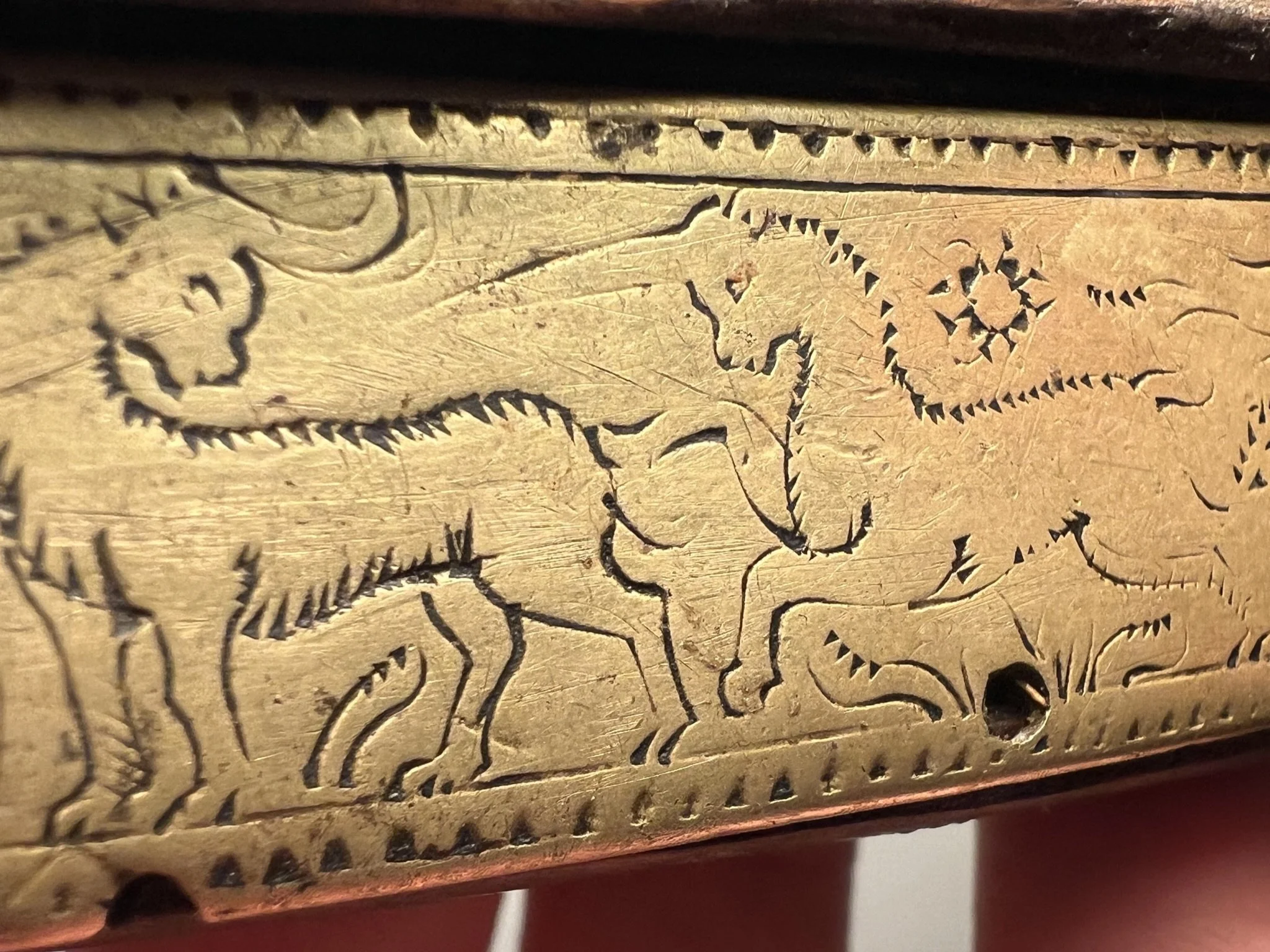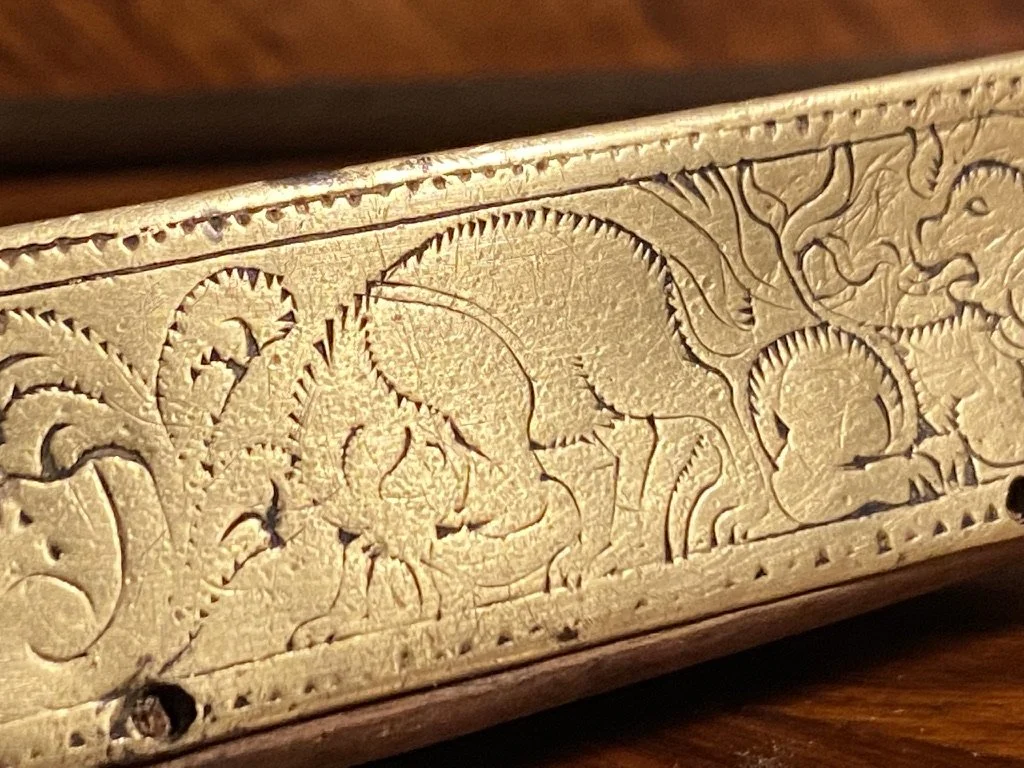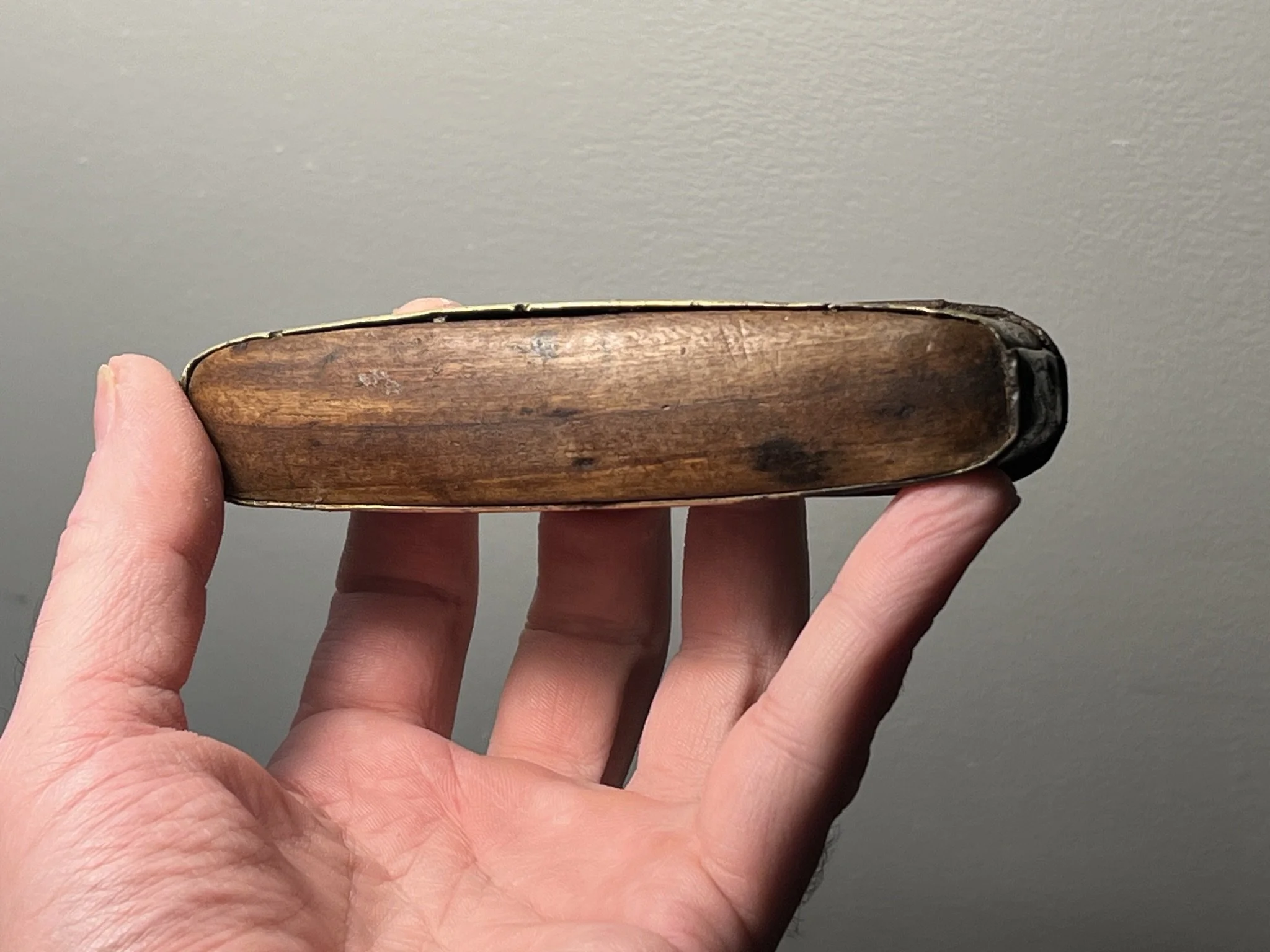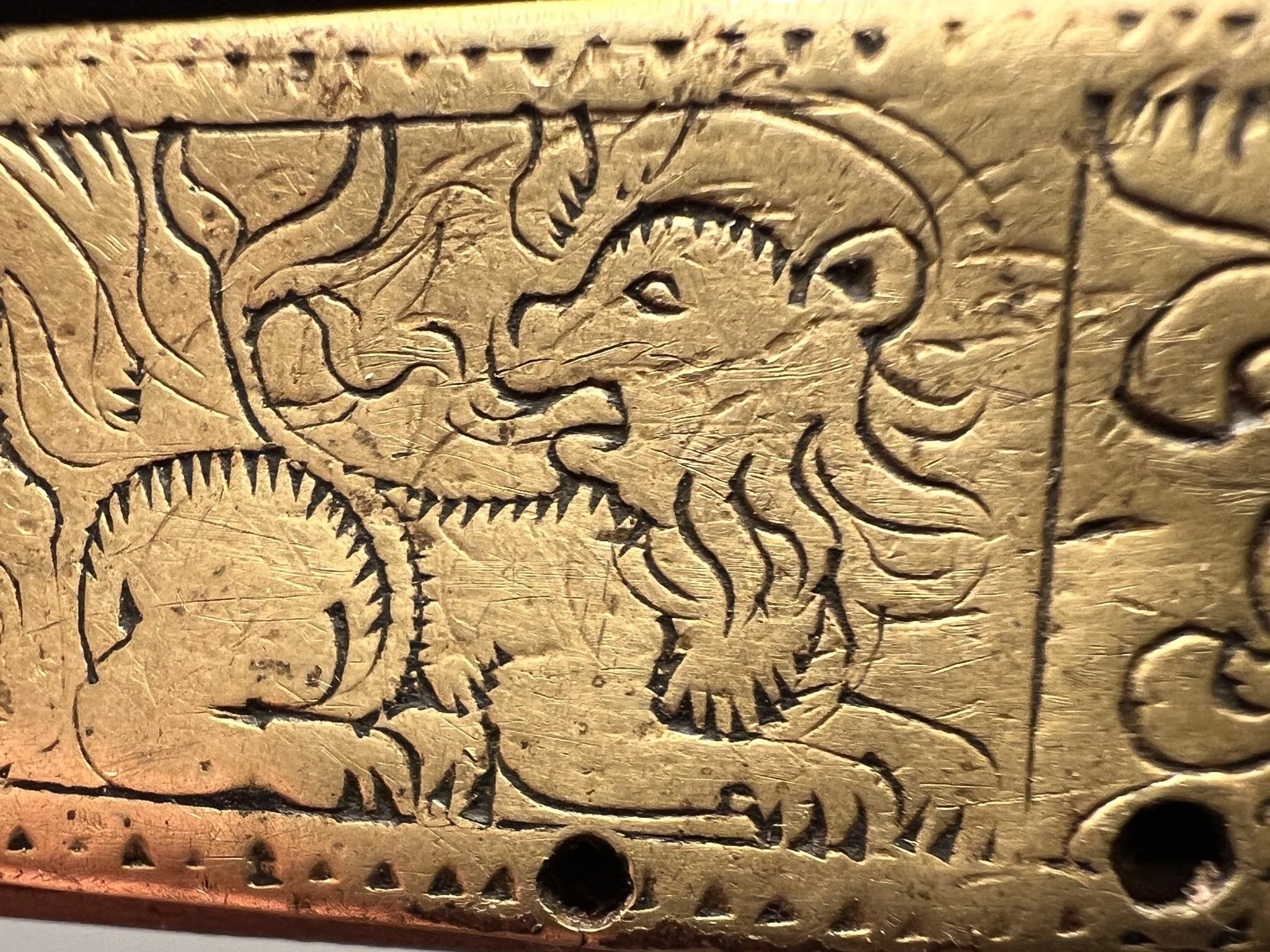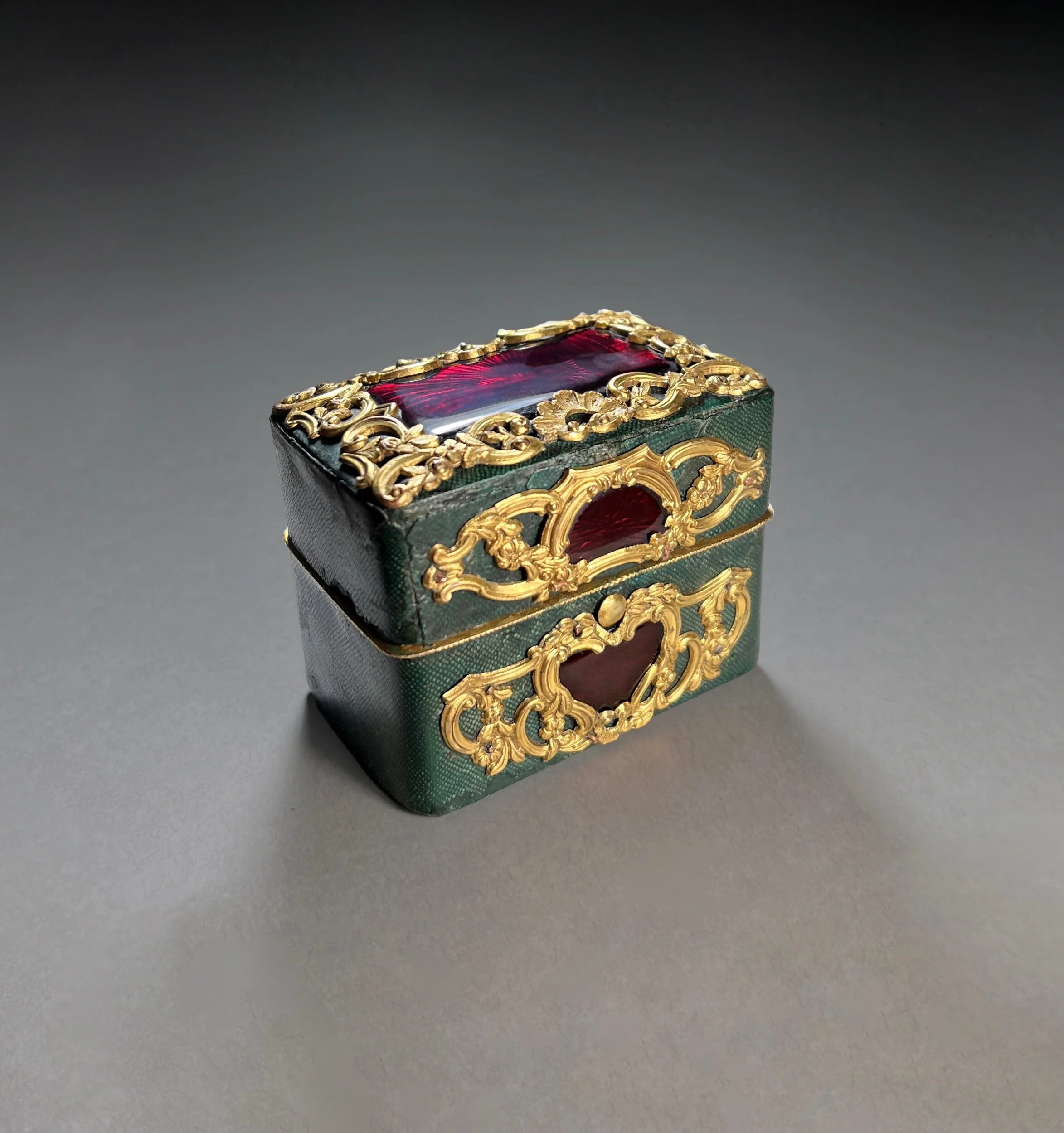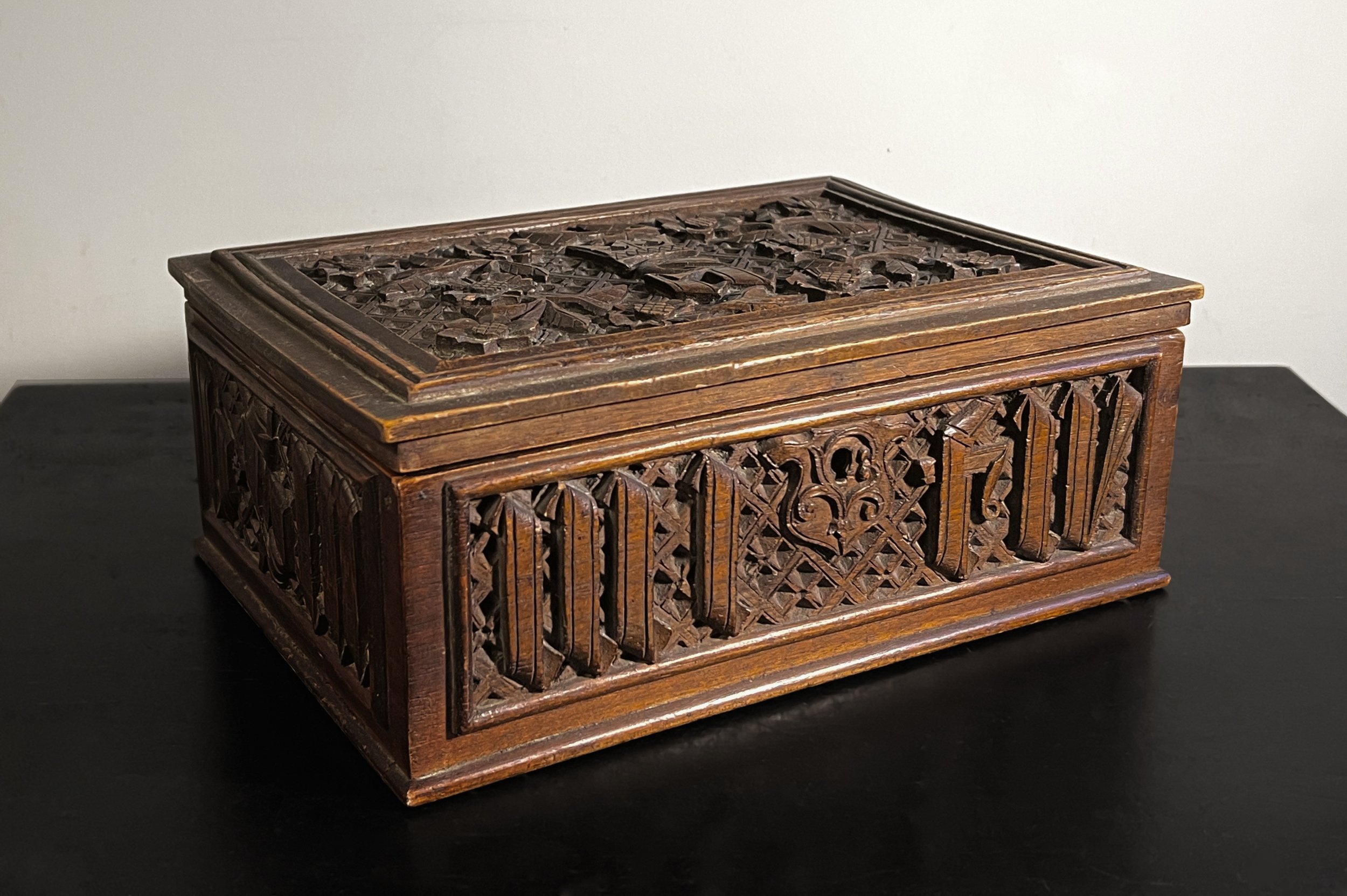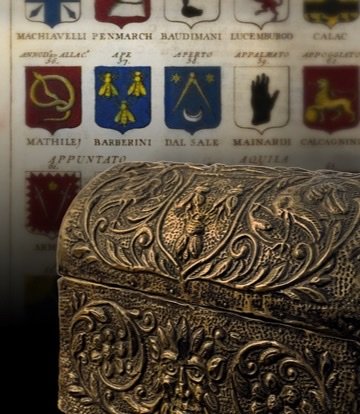Brass Powder Horn Box, German. 16-17th c.
Brass Powder Horn Box, German. 16-17th c.
A portion of a powder horn, remade into a long box with a wooden lid. The brass element features engravings of various animals, including camels and unicorns.
Books like Edward Topsell's :"History of Four-Footed Beasts (1607) and History of Serpents :(1608), along with Joannes Jonstonus’s "A Description of the Nature of Four-Footed Beasts" (1678), translated into English by J.P., further promoted the use of 'exotic animals' in heraldry. These works also influenced needlework, inlay, and other decorative arts that embraced intricate patterns and imaginative designs, often with figures engraved in brass to enhance their visual appeal.
Marks: Apparently unmarked
4.81 x 0.95 x 1.02 in (12.22 x 2.5 x 2.6 cm)
Condition: Rubbed
Conservation: Wooden lid and bottom section are later replacements. Some rivets likely replaced.
Literature: For similar style engravings, see: JONSTONUS, Joannes, and P., J.. A Description of the Nature of Four-Footed Beasts, with their figures engraven in brass ... Translated into English by J. P.. Netherlands, Widow of John Jacobsen Schipper & Stephen Swart, 1678.
